Did Hitler Have Influence Over the Arts and Culture
The countless influence of the Bauhaus
(Image credit:
Oliver Berg/DPA/Alamy
)
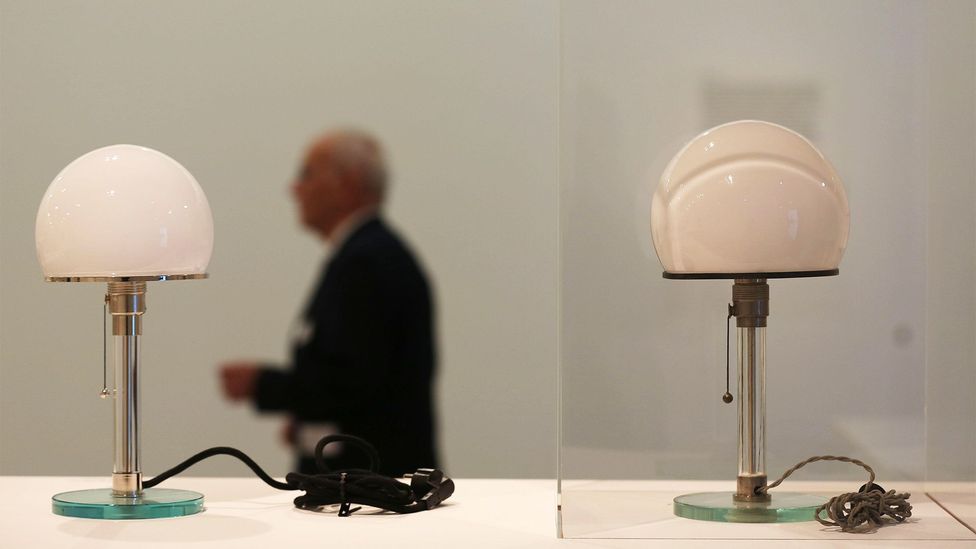
William Cook takes a look at the school which survived persecution again and again to influence the design of living today.
H
Here in Berlin, Deutschland's Bauhaus Archiv is throwing a farewell party. Next year this museum will close for renovation, and until and then it's presenting a display of 'greatest hits' from the earth's biggest Bauhaus collection. From furniture and posters to crockery and cutlery, these exquisite objects show how the Bauhaus schoolhouse shaped our idea of good design.
For about of us, the give-and-take Bauhaus conjures up a certain blazon of modern architecture – that stark artful that spawned a million tower blocks. Merely the Bauhaus was much more than an architectural style – it was a new way of thinking, and a century since it was born, at the finish of World War One, its ideas still set the pattern for the manner we alive today.
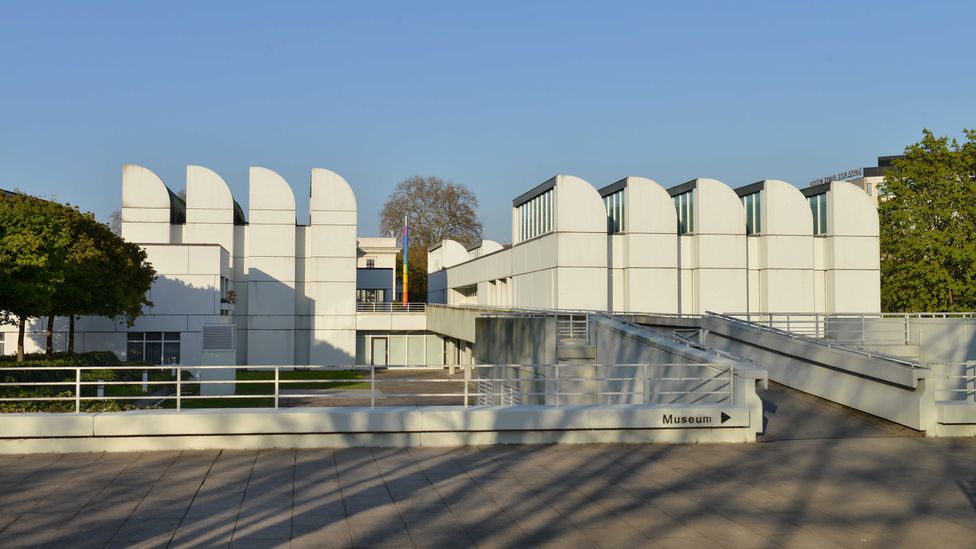
Germany's Bauhaus Archiv is presenting 'greatest hits' from the world's biggest Bauhaus drove while it undergoes renovation (Credit: Schöning/Ullstein Bild/Getty)
The Bauhaus was founded in 1919 in the German urban center of Weimar, by a Prussian architect called Walter Gropius. No architecture was taught here. It was a sort of art schoolhouse, but 1 similar no other. Instead of drawing nudes and still lives, students here were taught to expect at the world around them in an entirely unlike way.
Bauhaus means 'building firm' only Gropius didn't want to build but houses. He wanted to create a new breed of artists, who could turn their hands to annihilation. Traditional art schools were conservative and elitist. Technical colleges were dreary and conventional. Gropius broke down the barrier between fine art and applied arts.
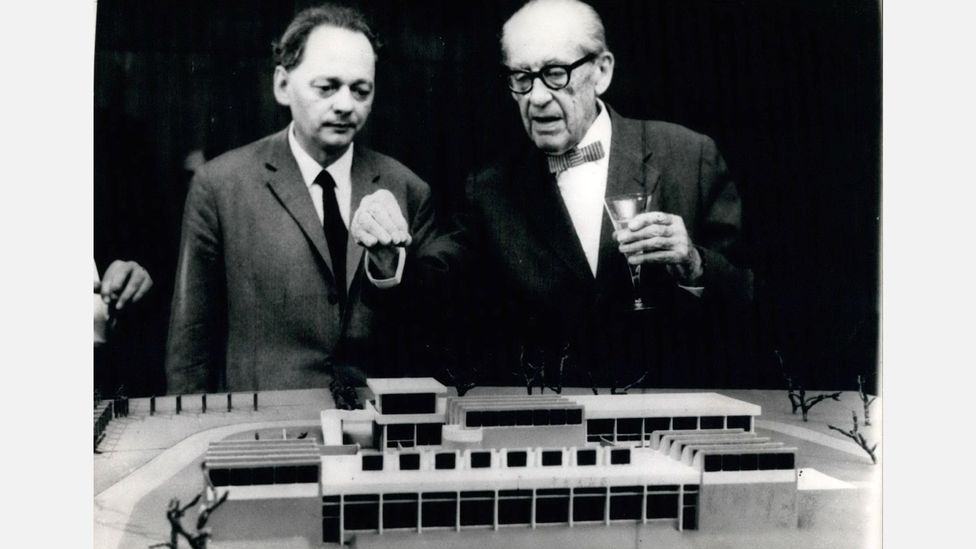
The Bauhaus was founded in 1919 in the German city of Weimar by Prussian Walter Gropius, pictured right (Credit: Keystone Pictures/Alamy)
"At that place is no essential departure between the artist and the craftsman," he said. Pupils learnt pottery, printmaking, book-binding and carpentry. They studied typography and advertisement. They went back to basics, and began again with fresh eyes.
"An object is defined by its nature," announced Gropius. "In society to blueprint it to function properly, one must get-go of all written report its nature. For information technology to serve its purpose perfectly, it must fulfil its function in a applied manner." Instead of sitting in stuffy classrooms listening to lectures, students were assigned to workshops. They learnt on the job.
Nature of objects
The results were extraordinary. The Bauhaus produced an incredible assortment of artefacts, from angle poise lamps to chess sets, all distinguished by their functional and elegant structure. They were uncomplicated and useful, and their simplicity made them beautiful. In an era of ornamentation, their streamlined appearance was revolutionary. This was a new age of design.
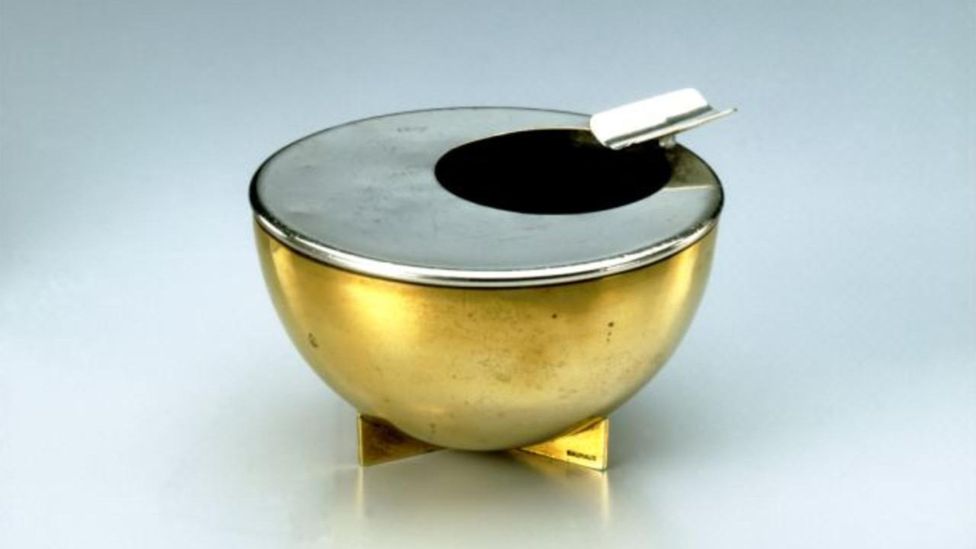
From chess sets to this ashtray by Marianne Brandt, the Bauhaus inspired many designs beyond architecture (Credit: Gunter Lepkowski/Bauhaus Archiv/VG Bild-Kunst)
"Bauhaus workshops are laboratories in which prototypes of products suitable for mass production are carefully developed and continually improved," alleged Gropius. "In these laboratories, the Bauhaus will railroad train and educate a new type of worker for craft and industry, who has an equal command of both technology and form."
Not everyone shared his vision. In local elections in 1924, the liberals who had supported the Bauhaus were defeated, and the new conservative government cutting off the schoolhouse'due south funding. On ane April 1925, exactly vi years later it opened, the Bauhaus was forced to shut.

An original desk lamp by Wilhelm Wagenfeld, an iconic Bauhaus design, sits adjacent to a modern replica in Germany's Bundeskunsthalle museum concluding year (Credit: Oliver Berg/DPA/Alamy)
Yet past at present, the word about the Bauhaus had spread manner across Weimar, and another German language city, Dessau, gave information technology a new home. The local regime commissioned a spectacular new building, designed past Gropius. It was here that the Bauhaus came of age.
A new home
In Dessau, Gropius started didactics compages, but he added other genres too. At that place were workshops devoted to weaving, metalwork, photography and stage blueprint. Gropius left in 1928 to resume his career as an builder, simply under a new director, Hannes Meyer, the school went from strength to strength. Bauhaus wallpaper became the school's bestselling product. At concluding, here was an art schoolhouse which could actually pay its way.
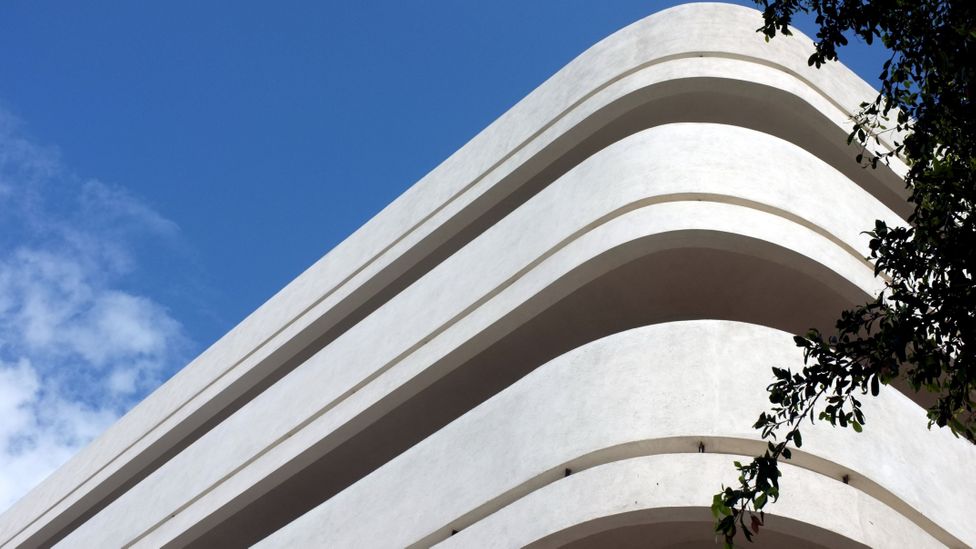
In Tel Aviv, the White City is a drove of over 4,000 buildings built from the 1930s in the Bauhaus style by German Jewish immigrants (Credit: IAISI/Getty)
Merely German politics was polarising, and support for the Nazis was growing. In 1930 Dessau'due south city council dismissed Meyer on account of his "communist tendencies," and in 1931 the Nazis won the local elections, having promised to close the Bauhaus (they chosen information technology "cultural bolshevism"). Thankfully Gropius's building survived and even so stands in that location today, but the students and teachers were forced to flee. They found a new home in an old factory in Berlin, under their new director, the bright architect Mies van der Rohe, but in 1933 Hitler came to ability, and close the Bauhaus downwards.

Afterward the original Bauhaus was forced to close, the German city of Dessau gave it a new home, in the form of a building designed by Gropius (Credit: Iain Masterton/Getty)
A modern threat
Why did the Nazis feel so threatened by the Bauhaus? Why were they and then scared of an fine art schoolhouse that made modernist furniture and kitchenware? Considering it represented a world view which was the consummate opposite of National Socialism.
Nazism was nostalgic and nationalistic. The Bauhaus was cosmopolitan and avant-garde. Its international ethos made a mockery of Hitler'due south racist fantasies. In a manner, the persecution of the Bauhaus past the Nazis was a (very) backhanded compliment. They hated everything information technology stood for, but they were fearful of its power.
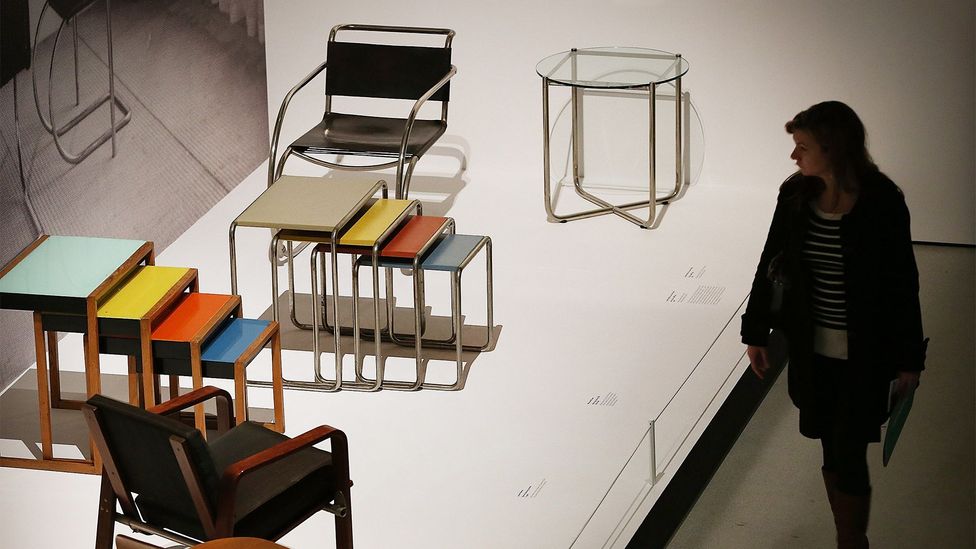
A visitor looks at tables and chairs on display at the 'Bauhaus Art as Life' exhibition in London, 2012 (Credit: Fred Duval/WireImage)
Ironically, it was this persecution of the Bauhaus which ensured its survival. Had it been embraced by the Third Reich, it would have perished with it. Driven into exile, its philosophy spread effectually the globe. Gropius and Mies van der Rohe went to America, where they were joined past Bauhaus teachers such as Josef Albers, Herbert Bayer, Walter Peterhaus and Laszlo Moholy-Nagy. In 1937, Moholy-Nagy founded the 'New Bauhaus' in Chicago. In 1938, New York's Museum of Modern Art staged a blockbuster Bauhaus exhibition. Bauhaus style was here to stay.
Only what exactly is Bauhaus mode? Similar all design classics, you know it when you see it, but Mies van der Rohe's motto, 'Less is More,' is a adept place to starting time ('chuck out the chintz' is just every bit good). Grade follows function. Each chemical element is stripped downwardly to its blank essentials. Everything is fit for purpose. The result is austere, just strangely pleasing on the eye.
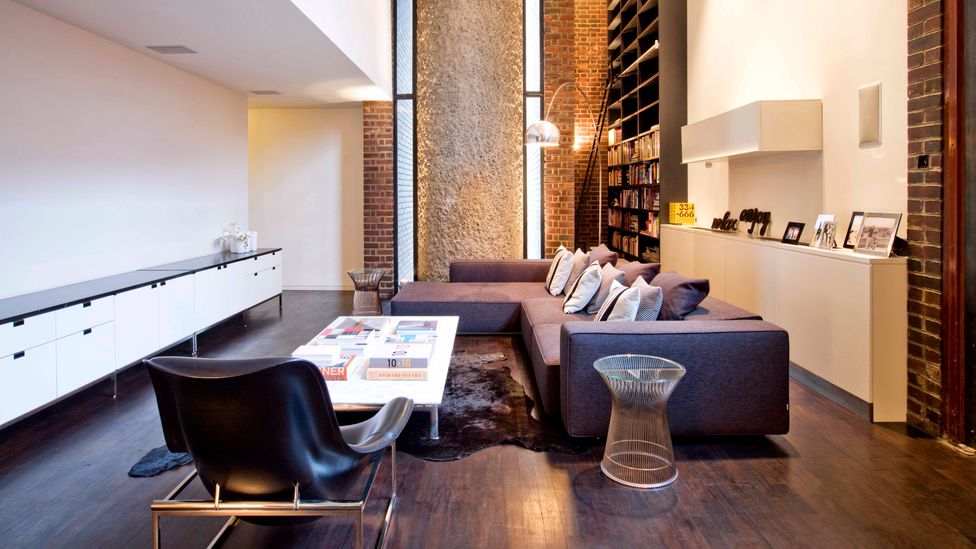
The influence of the Bauhaus is ubiquitous even today, equally is axiomatic in a modern-twenty-four hours apartment in London's Barbican Estate (Credit: Robert Oliver/ArcaidImages)
Withal the truthful measure of its immense influence is how familiar it has become. Wandering around the Bauhaus Archiv (a futuristic edifice designed by Gropius, and eventually built after his expiry) the exhibits here seem so gimmicky. Information technology'due south only when you lot read the labels that yous realise they are virtually a hundred years old. Once a radical revolt against the status quo, Bauhaus style has become the new normal. And past becoming ubiquitous, it has disappeared - into the décor of our daily lives.
Bauhaus in Motility is at the Bauhaus Archiv, Berlin until 8 January 2018. New Bauhaus Chicago: Experiment Photography is at the Bauhaus Archiv from 15 November 2017 to 5 March 2018.
To comment on and see more than stories from BBC Designed, you can follow u.s. on Facebook , Twitter and Instagram . You tin can also see more stories from BBC Culture on Facebook and Twitter .
If you liked this story, sign up for the weekly bbc.com features newsletter called "If You Only Read 6 Things This Week". A handpicked selection of stories from BBC Future, Civilization, Capital and Travel, delivered to your inbox every Fri.
Source: https://www.bbc.com/culture/article/20171109-the-endless-influence-of-the-bauhaus

0 Response to "Did Hitler Have Influence Over the Arts and Culture"
Post a Comment